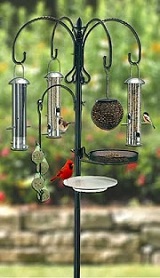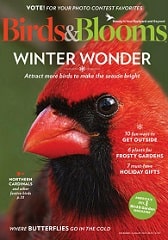Mystery of Bird Migration
East to West?
Many of our summer birds -- the neotropical migrants travel thousands of miles twice each year between their winter homes in the south and breeding grounds in the north.
And even scientists who have spent years trying to solve this mystery don't have all the answers.
Some birds migrate north to south, others east to west. Then there's the wandering albatross, which breeds only every other year.
So it can stay at sea for as long as two years at a time, following the ocean currents and prevailing winds in an unending circular route around Antarctica.
Some believe that birds have the ability to navigate using the sun or stars as a compass. Others think that land formations, rivers or wind directions play a part.
A recent finding alluded to an unusual chemical in birds eyes that may make them able to "see" Earth's weak magnetic lines of force as if they were an interstate highway in the sky.
Feed Migrating Birds

See All Feeders
It makes sense that many small North American songbirds travel at night. They are somewhat protected from predators, and they are able to feed during the following daylight hours.
Approximately two-thirds of all North American bird species migrate. This means they travel from a breeding area to a wintering area and back again.
How do birds know when it's time to leave their summer or winter homes? They must prepare for this long flight by molting old feathers and growing new ones, as well as putting on extra fat to fuel their long flight.
Some people believe that it simply is instinct that brings birds north to breed in their traditional summer grounds. But birds also can improve or change their techniques.
For instance, as they get older, they learn the most productive areas for food and change their route accordingly.
Many North American birds time their travel so that the young nestlings hatch just as spring seeds and berries ripen and insects arrive.
Northbound migrants must time their travels correctly or face winter-like conditions when they return.
The indigo bunting that breeds and raises its young in the northeastern half of the country, migrates each fall as far south as Panama. For a little bird that's quite a trip.
Although buntings separate into breeding pairs in the spring, during the time they fly north they form flocks for their journey.
Within one species in the same state there can be variations in migratory patterns. Some white-crowned sparrows, for example, are permanent central California residents.
Other white-crowns migrate from northern breeding grounds to southern parts of the state.
One tiny bird that travels thousands of miles between its summer and winter grounds is the ruby-throated hummingbird. It summers in the eastern half of the U.S. and southern Canada and winters in Mexico and points south.
How a bird, measuring barely three inches in length and weighing only a few grams, is able to fly thousands of miles and still maintain its course against prevailing winds is beyond the imagination. And yet, each year this feat is repeated.
The hummingbirds, buntings and all of our summer birds return every year to grace our backyards, fields and woods.
Although "neotropical" sounds exotic, many of these species are regular visitors to backyards.
Purple martins, hummingbirds, warblers, thrushes, buntings, orioles, vireos and tanagers all are considered neotropical migrants because most of their populations winter south of the border.
Whether mystery or miracle, this cycle has continued throughout the years. Keeping a bird journal can help you learn a little more about your feathered friends.
When the first migrant flies into your yard, mark it on a calendar and jot down some notes. Include any other observations you make on these birds. You could be helping to solve the mystery of migration.
©2003 birdfeeding.org. The Bird's-Eye reView



